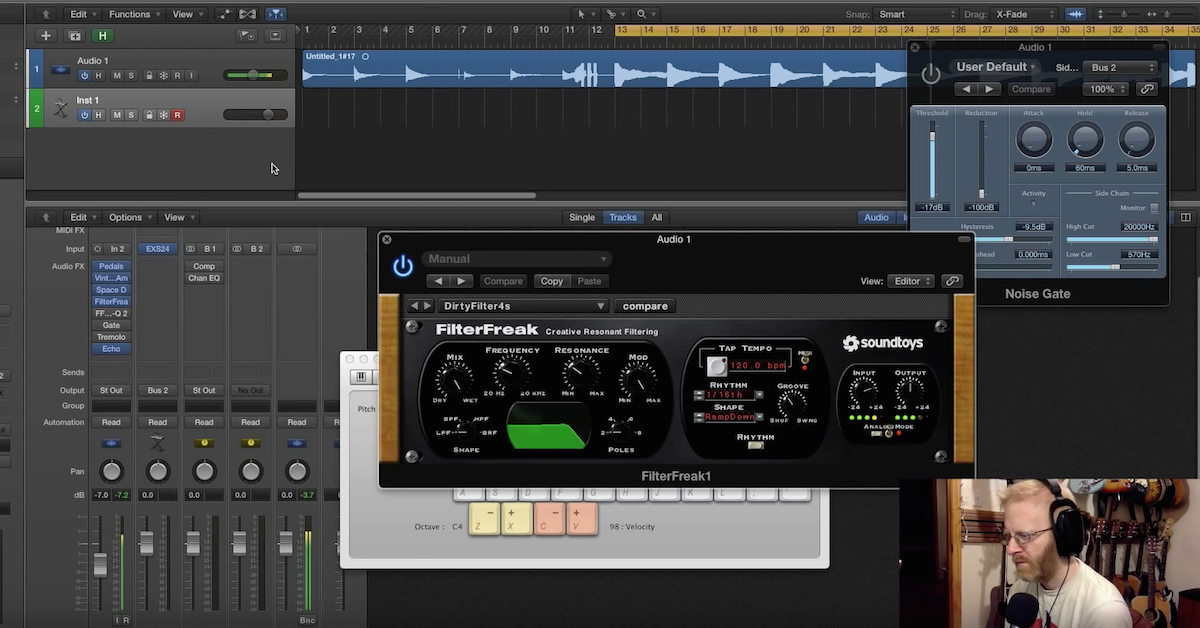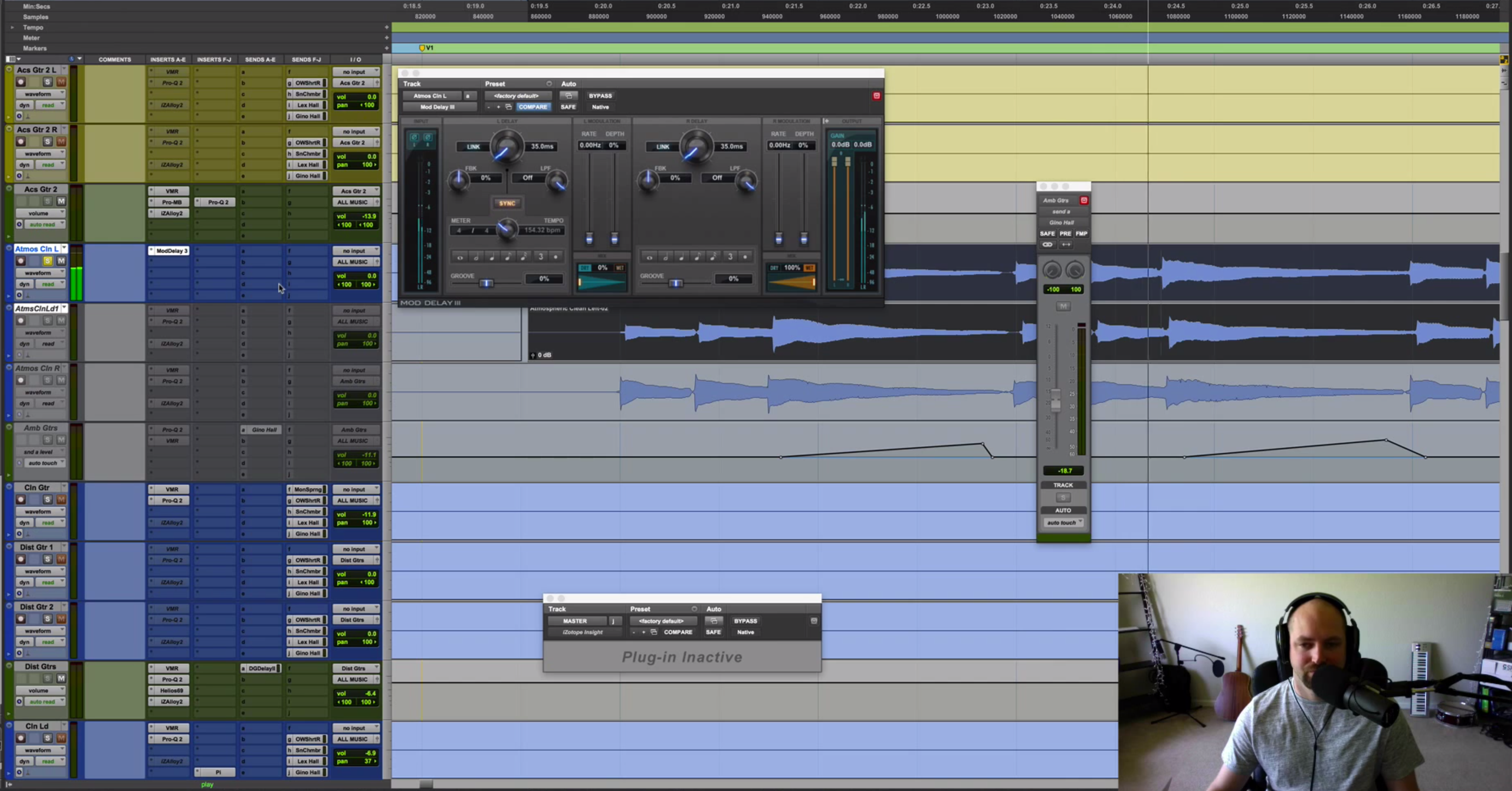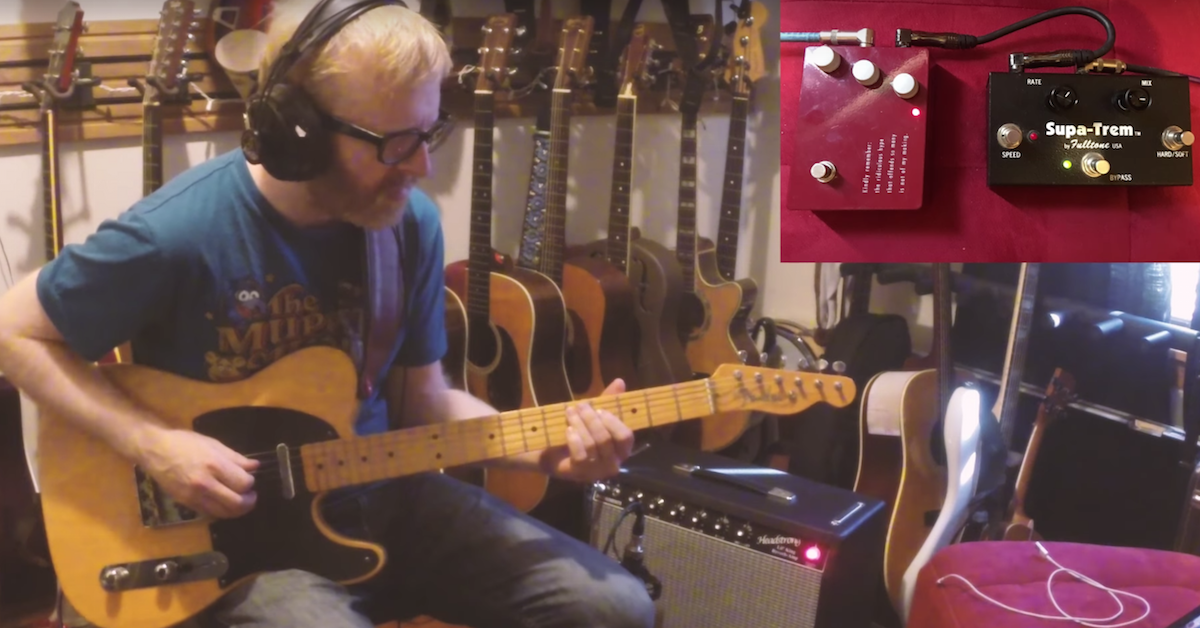Tips for Adding Excitement to Synth Pads with Tremolo Pan
Transcript:
What’s even cooler about tremolo in the box or as a plug-in is the tremolo plug-ins also give you the ability to do auto-panning. So you’ve got the vertical up and down movement, and then you’ve also got side to side.
So with the Plug and Mix Tremolo pan, you have the width knob. Pro Tools comes stock with an auto-panner from the old TL Space guys. I don’t even remember what the company was. It’s been years since I’ve even looked at that, but auto-panner is included with Pro Tools and you can do the side to side stuff, but the vertical is amazing when you combine it with the side to side.
So I’m going to show you a couple of ways to look at that, but before we do, I’m going to walk you through a couple of the parameters built into this Plug and Mix tremolo pan. And if you’re a SoundToys owner, you’ve got Pan Man and the Tremolo plug-in. They’re two separate plug-ins, you’d run one after the other to accomplish the same thing, but in this case, because the Plug and Mix does a vertical and side to side, I’m going to use two instances of this plug-in, and use them a little bit different.
In this example, I’m going to take a pad and I’m going to turn it into kind of a send moving up and down and side to side. It’s going to be pretty cool, but this again is not limited to pads or guitars. You can do anything you want with this. I love throwing a combination of this effect on the back of vocals, as you’ll see when we get to the vocals module, but without further ado, I’m going to just go through and walk you through it.
When you’re using tremolo, it’s important to be in tempo with the song. This song is at 150, so it syncs to the session tempo. If not, you can click that, and you can kind of feel it out, but at some point, it’s going to get a little bit weird, so you’re going to want to make sure you’re synced to session tempo if at all possible.
For this first instance, I’m going to show you what the different timing you’re going to do – let’s go 100% wet for now, which is the depth control here. This is our sine wave, so it’s kind of like a soft sine wave up and down with soft edges. Let’s take a listen to what this does.
[song plays]
[pad plays]
Forgive me. There you go. Quarter note. This would be a whole note. Half note kind of thing. One bar. So then half dotted, half note… All the way through to a thirty-second note. Sixteenth.
Cool. This is one we’re going to work on in a second, but for now, let’s go back to quarter. Kind of that pulsing vibe, right? You could go wide left to right. Okay, and it’s called a tremolo pan because that’s not tremolo. Tremolo is the vertical movement, side to side is the panning.
Back to mono. We have our up and down vertical movement. Let’s try triangle.
So, with triangle – got her background vocals through an aux track, so forgive that for coming in – the triangle is like a pointy tip, right?
[synth pad]
A little staccato articulate vibe. Square is going to be like a square wave. Very synthy. Okay.
For this particular effect, I just wanted to walk you through, but I’m going to go with a sine wave, because I want that verticle movement right there – a nice gentle pulse – but I’m going to copy over and I’m going to have another instance of tremolo pan, and we’re going to have sixteenth notes instead of quarter. So the quarter is the pulse, the sixteenth is going to be – actually, it’s still going to be up and down, but it’s going to be a sweet vibe to add to the quarter.
Excuse me. So quarter note, let me back off the depth to like 50%. That’s this.
[synth]
A little bit of a vibe from that, and then we’re going to add this second one at a sixteenth note.
[synth]
And it’s a square wave. Let me bypass the first one. As Pro Tools gets at me here.
If I bypass that first one, and leave it alone, you’re not going to feel that up and down pulse, it’s just going to be like a straight sixteenth note square wave.
[synth pad]
Back with a pulse.
[synth pad]
Pretty sweet, right? Then – see, there I go again, I said pretty sweet, right? Okay.
After that, I’m going to get a little bit more creative. I’m going to add some distortion.
[pad with distortion]
Sick. So, we’ve got a little bit of a vertical pulse, we have the sixteenth note square wave that’s creating a synth type vibe, now I’m going to go with a little bit of flange. We’ve been talking about modulation, so here’s a flanger. This is the Pro Tools stock AIR flanger. I didn’t even touch it. Factory default setting, it’s a slow flanger. You can hear it.
Here’s before.
[synth pad]
After.
Okay. Then, another stock plug-in for Pro Tools users is Lo-fi, and most DAWs have an equivalent for Lo-fi, and this one gets pretty dramatic, so what I’ve done, I’ve added distortion, I’ve added noise, I’ve touched it with saturation, and then the biggest one to rip the audio and tear it up a little bit, I’ve brought it down to six bits.
So let’s check that out before and after.
Okay, just to remind you, we started with this.
Enter the magic of tremolo pan. And the rest of them.
[synth pad]
Pretty stinkin’ awesome. I didn’t say pretty sweet, right?
So that on the back end of a delay is nasty. I do it all the time. It’s one of my favorite effects. Taking synth – or excuse me – taking pads and turning them into a synth whenever I’m sent tracks and I don’t want to go through and create a new synth, I’m hired to mix, I want to get creative in the mixing process, I’ll duplicate a pad and start throwing plug-ins on and see what happens. Hopefully that inspires you to do the same thing.
The vertical movement – different rhythms can compliment each other, followed by a side-to-side movement could even be cool. You could throw Pan Man on here and create a shift. We’re going to look at one of my new favorite plug-ins from Good Hertz, it’s called Pan Pot, and it does some really cool stuff with phase, and I had a lot of requests come through talking about spatial plug-ins, so it’s going to be one of those that we feature in that, and it’s super affordable from the good people at Good Hertz, and tons more to come.





